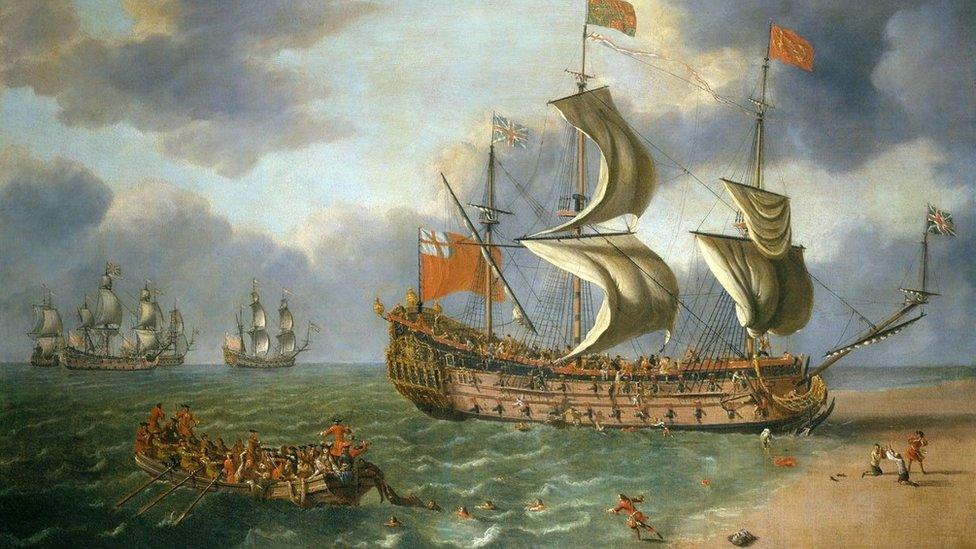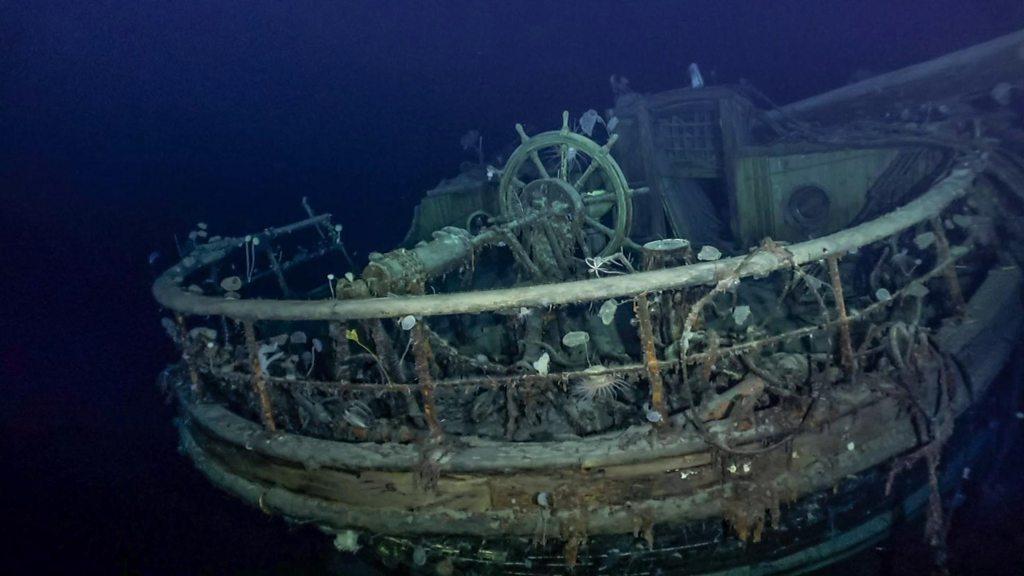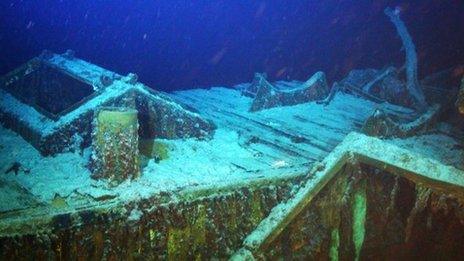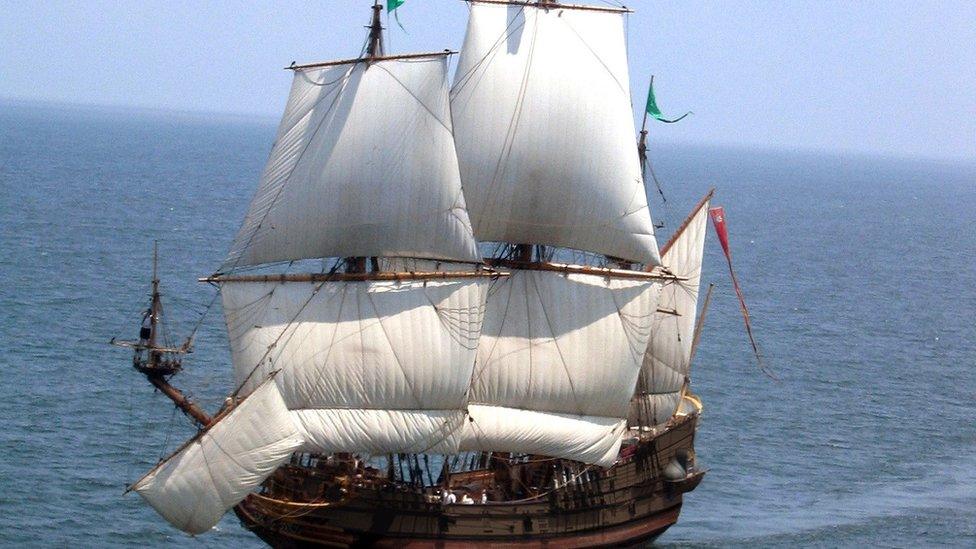The Gloucester: Shipwreck is UK's most 'significant historic maritime discovery' since Mary Rose
- Published
- comments

A painting of the HMS Gloucester
A shipwreck found off the coast of Norfolk has been called the most important find since the wreck of Henry VIII's famous Mary Rose.
The ship called HMS Gloucester, sank in 1682 off the coast of Great Yarmouth, Norfolk, whilst carrying the future King James of England, Ireland and Scotland.
The shipwreck was found in 2007 but has only just been revealed due to security reasons.
Maritime expert Professor Claire Jowitt said it was of "international importance".
HMS Gloucester

The 340-year-old Gloucester ship was discovered by divers
In the morning of 6 May 1682, the Gloucester set sail from Great Yarmouth heading to Edinburgh to take the Duke of York - who would later become King - to do business at the Scottish Parliament.
But it hit a sandbank and faced strong winds, causing it to sink within a hour.
The Duke of York was rescued, along with about 330 others but it's believed between 130 and 250 sailors and passengers were not saved and didn't survive.
If the Duke had not been rescued, it may have changed the course of history, as he went on to become King James II of England and Ireland (and King James VII of Scotland) in 1685, after his brother died.
Why is this find so important?

James ruled England and Ireland as James II and Scotland as James VII, from 1685-1688.
Well, for many reasons, firstly because the future King was on the boat, it could have changed history. Also the boat provides lots of detail into the history at the time.
Professor Jowitt, said: "Because of the circumstances of its sinking, this can be claimed as the single most significant historic maritime discovery since the raising of the Mary Rose in 1982."
"The discovery promises to fundamentally change understanding of 17th Century social, maritime and political history."

Professor Claire Jowitt said the find was the most important maritime discovery since the Mary Rose in 1982
It is an outstanding example of underwater cultural heritage of national and international importance... the full story of the Gloucester's last voyage and the impact of its aftermath needs re-telling
The Mary Rose is a warship than sank in 1545 and then rediscovered back in 1982.
Millions of pounds went into restoring the ship and it's the only 16th century warship on display in the world.
Divers have spent the last four years exploring this wreck. Norfolk based brothers Julian and Lincoln Barnwell were part of a team of four who did the diving expeditions.
Lincoln said: "We were the only people in the world at that moment in time who knew where the wreck lay - that was special and I'll never forget it."
What was found?

The ship's bell, made in 1681, was discovered in 2012 and helped to verify it was the Gloucester ship
The team discovered the 340-year-old shipwreck in 2007, but it wasn't until 2012 they found the ship's bell and then the Ministry of Defence and Receiver of Wreck decided to identify it as the HMS Gloucester.
Along with the bell, divers found clothes, shoes, navigational equipment and personal items.
Items found from the wreck are due to go on display in spring 2023 at Norwich Castle Museum and Art gallery.
- Published10 March 2022

- Published28 September 2011

- Published19 July 2016

